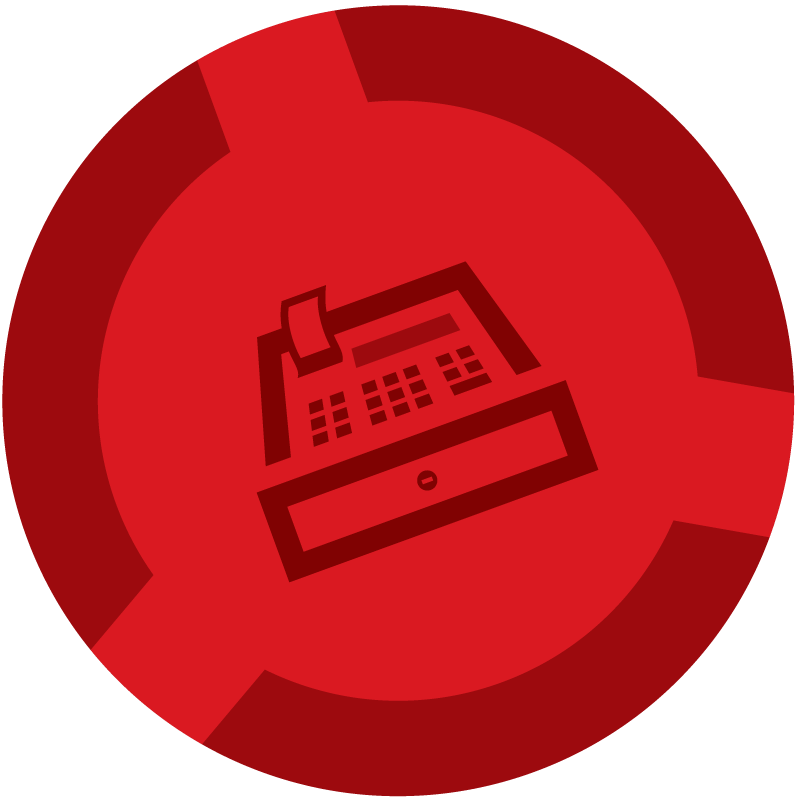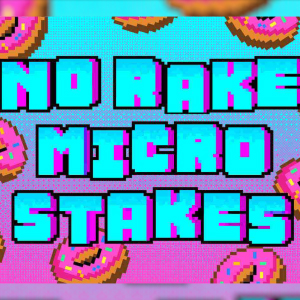Although stats are important factor in our postflop planning, stack sizes play equally important role for our decision making processes
In the first article we considered

why thinking ahead is important if we want to routinely make the strongest decisions on earlier streets. While flop stats are relevant to our decision making process – the strongest option can sometimes only be discovered by considering them in conjunction with the stats for later streets.
However even vs opponents with identical stats we can sometimes be forced to make different decisions as a result of our opponents stack-size. We should always factor the remaining chips into our decision. As an example we should have a considerably different
3-betting range vs a player with 100b stacks when compared to our 3betting range vs a player with 20bb stacks.
As a rough guide, the shallower the stacks get the more we care about our raw equity as opposed to our playability. While we might 3bet something like 67s 100bb deep, it will often be a sub-optimal 3bet with 20bb stacks. This is because we are not making our 3bet decision in isolation, but should always be considering the future implications of what we decide on any given street.
Reverse-Implied-Odds
Let's think about what it really means to have reverse implied odds and why the term is called this way. Let's imagine the following situation.
There is $200 in the middle with $100 behind effective stacks. We have a weak top pair on the turn and face a $100 all-in bet (half-pot) from our opponent. We estimate that we have about 27% equity vs his range. Should we call?
Well, how much
equity do we need to make the call? We would be investing about $100 into a total pot of $400. We'd need about 25% equity to make the call. It should be clearly profitable in this case.
Now let's imagine the same situation with a few adjustments. In fact, assuming that we are not in the habit of thinking ahead, the situation is completely identical.
There is $200 in the middle with $500 behind effective stacks. We have a weak top pair on the turn and face a $100 bet (half-pot) from our opponent. We estimate that we have about 27% equity vs his range. Should we call?
Did you notice the difference? It's subtle. Many players would actually make the exact same decision, citing the exact same logic as above. We need 27% equity based on the price we are getting. We have that, and should therefore call. But the question is, are we really getting the same price here?
In the first example we were guaranteed to see a showdown and fully realise our equity for our $100 investment. Is that still true? No, all we are guaranteed now is to see a river card. We are no-longer guaranteed to fully realise our equity. We may have to pay up to an additional $400 in order to realise our equity.
How frequently will this occur? That depends entirely on our opponent. If our opponent is passive and will rarely fire the river then the situation is not hugely dissimilar to the first example. Let's imagine an extreme situation where villain will bomb the river for a pot-size bet of $400 every time.
How much are we really paying to realise our equity in this case? The easiest way to calculate the worst case scenario quickly is to imagine that villain
overbet shoves all-in on the turn. Now we are investing our entire $500 stack, into a total pot of $1200. This means we'd need roughy about 42% equity to call.
The exact price we get on the turn when we factor in future river play will roughly range between 25% and 42% depending on how frequently our opponent will fire the river. We say “roughly” because we should ideally also factor into account or equity vs our opponents equity, assuming we can sometimes spike trips or 2pair on the river and stack our opponent.
How much are we really paying to realise our equity in this case? The easiest way to calculate the worst case scenario quickly is to imagine that villain overbet shoves all-in on the turn.
Without complicating things too much, it should be pretty plain to see that the 2 examples are quite different when we take into consideration future play. If we miss our opportunity to think ahead we can easily fall into the trap of making a losing call on the turn. It should also be possible to understand a little more behind the meaning of the phrase “reverse-implied-odds”.
Our pot-odds are not what they appear to be in the second example. Our direct pot-odds tell us that we only need to have 25% equity in order to make the call. We establish our implied odds only by looking ahead – and we can see that our effective pot-odds (or implied-odds) are actually worse than the direct pot-odds we appear to get offered. In a situation where our effective pot-odds are larger than our direct pot odds we say that we have “implied odds”. In a situation where our effective pot-odds are considerably smaller than our direct pot odds (such as this one) we say that we have “reverse-implied-odds”.
Leverage
Despite the fact

that our opponent makes exactly the same size bet in example 2, doesn't it seem as if he has an additional advantage? In example 1 he couldn't get us to lay down a weak top pair, but in example 2 we are feeling completely priced out and forced to fold.
This is an example of an advanced poker concept known as
leverage. Even though our opponent does not directly use that additional $400 in making his bet, it affects the implied odds we get. If we are playing well it will influence our decision and cause us to fold certain types of holding more frequently as a result. These are specifically those holdings which are prone to suffer from reverse implied odds. Not all hands do.
Dominated hands generally suffer from reverse-implied odds. (The more money that goes in, the more likely they are to be beaten). Nutted hands or nutted draws generally like the deeper stacks and benefit from implied odds. The deeper the stacks the more money we can make against our opponent's 2nd best hand.
The good news is that we can use leverage to our advantage. We can use our deep stacks to allow us to bluff more. Even if all of those chips are not directly in play, the fear of us betting on later streets should have an effect on a thinking player's willingness to continue. The deeper the stacks get, the less important our pot-equity becomes and the more important our playability or implied-odds become. Playbility would also include putting our opponent in a situation where he suffers from reverse-implied-odds.
The 3betting example mentioned at the outset is a simplistic example of this. We are happy to 3bet a hand like 67s preflop when we know there is plenty of potential for postflop bluffs. 100bb stacks will usually still accord us the ability to fire 3barrels as a bluff on selected flop textures. It doesn't really matter that 67s is a low-equity hand since we can put additional pressure on our opponent with the deep stacks. Assuming
20bb stacks however, the future playability doesn't really account for much. Now we are closer to decision-making in a vacuum and care more about our raw equity.
Theory and Bluffs
The idea of bluffing with a higher frequency when the stacks are deep is also considered correct from a theory point of view. Even
poker maths calculations take into account future play possibilities when constructing a bluffing frequency. The first thing we would do if we were using maths is to look at our stack size and make an estimate regarding our average river betting size assuming we were to fire. (Check the article on
GTO aggression for more info).
The idea of bluffing with a higher frequency when the stacks are deep is also considered correct from a theory point of view. Even maths calculations take into account future play possibilities when constructing a bluffing frequency.
This will naturally be affected by the current stacks. The larger our projected bets on later streets the more we can get away with bluffing on the street we are currently on. In other words if we have one pot sized bet left on the flop, our bluffing frequency would be a lot lower than in an identical situation where we also have additional chips left to bet turn and river.
So we can learn at least two things from this -
- It's mathematically correct to think ahead!
- It's mathematically correct to bluff more frequently when we can put additional pressure on our opponent with big effective stacks.
Note that the concept of leverage only applies on streets before the river. Naturally our opponent is closing the action on the river and will hence always know exactly what pot-odds he is getting. However it's still true that we can put more pressure on our opponent with larger bets and that the larger we bet, the more frequently we should be bluffing (at least from a theory perspective).
Using Available Tools
The more accurately we can predict how our opponent will react on later streets the better our understanding of how to act on earlier streets will be.
Naturally we are not able to foretell the future, but it is possible for us to make predictions based on information that we already have, for example HUD stats. Some of these HUD stats are reasonably obvious – in
the first article we talked about cbet stats and fold-to-cbet stats. However these are not the only stats available for us to make use of.
When cbetting vs our opponent for example, while we are interested in his fold-to-cbet stat this is clearly not the only relevant piece of information. We are also interested in how he chooses to defend assuming he does defend. Will he defend primarily by calling or by raising? This can influence our decision on whether to cbet the flop in the first place with certain types of holding.
Also let's assume

our opponent does decide to check/raise us. His check/raise stat is obviously relevant but is this the only thing we are interested in if we want to construct a decent plan? We are naturally also interested in how much our opponent will barrel the turn after he check/raises.
This will undoubtedly have an influence on how frequently we will decide to call vs his flop-raise. As we saw in the previous article, while a high flop raise stat might be an indication for us to call wider, this is dependent on our opponents play on future streets. I.e how often will he barrel, and how often will he give up facing a raise on a later street.
Our opponents' barreling tendencies on turn and river after a flop-raise can be extremely useful if we have the right sample size for it. However the majority of players do not have or use this information. So regardless of how much of our time we invest in thinking ahead – good decision making will often be related to our ability to harness the power of software and statistics.
The opposite stats to the ones discussed are also very useful for the purposes of future planning. So if our opponent calls a flop raise, how often will he be folding to barrels on the turn and river. Again many people have no clue that these stats even exist. To benefit from this information we have to add the stats to our HUD and use them when the sample size allows.
Our opponents' barreling tendencies on turn and river after a flop-raise can be extremely useful if we have the right sample size for it.
Take your time
With the invention of fast format poker it's becoming increasingly common for players to make decisions without a great deal of thought. This would be perfectly fine if we could consistently make good decisions on a street-by-street basis.
However, as we have learned, the only way to consistently make good decisions in poker is to first consider what may happen on later streets before acting. This may take some time. It also may take some
mental re-programming if we are used to acting quickly without thinking.
The next time you are at a poker table – when you think you know the correct decision – pause for a little longer and ask yourself whether you have considered what may happen on future streets. You might decide to do something completely different on the current street as a result.
 why thinking ahead is important if we want to routinely make the strongest decisions on earlier streets. While flop stats are relevant to our decision making process – the strongest option can sometimes only be discovered by considering them in conjunction with the stats for later streets.
why thinking ahead is important if we want to routinely make the strongest decisions on earlier streets. While flop stats are relevant to our decision making process – the strongest option can sometimes only be discovered by considering them in conjunction with the stats for later streets. that our opponent makes exactly the same size bet in example 2, doesn't it seem as if he has an additional advantage? In example 1 he couldn't get us to lay down a weak top pair, but in example 2 we are feeling completely priced out and forced to fold.
that our opponent makes exactly the same size bet in example 2, doesn't it seem as if he has an additional advantage? In example 1 he couldn't get us to lay down a weak top pair, but in example 2 we are feeling completely priced out and forced to fold.  our opponent does decide to check/raise us. His check/raise stat is obviously relevant but is this the only thing we are interested in if we want to construct a decent plan? We are naturally also interested in how much our opponent will barrel the turn after he check/raises.
our opponent does decide to check/raise us. His check/raise stat is obviously relevant but is this the only thing we are interested in if we want to construct a decent plan? We are naturally also interested in how much our opponent will barrel the turn after he check/raises.

